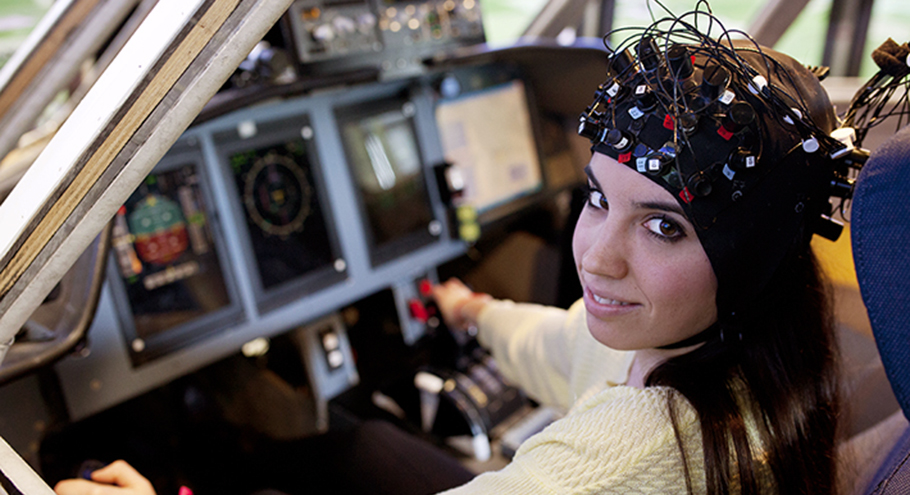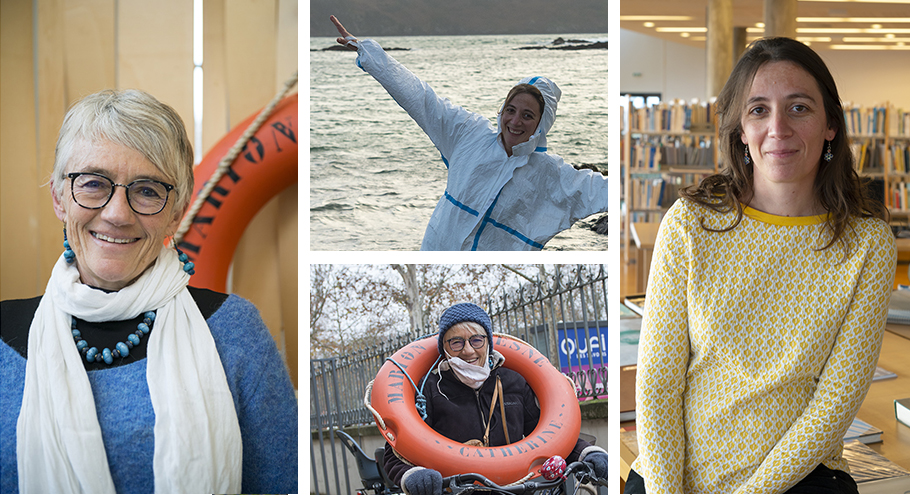Swings #1: "Trace metals", the oceanographers' holy grail
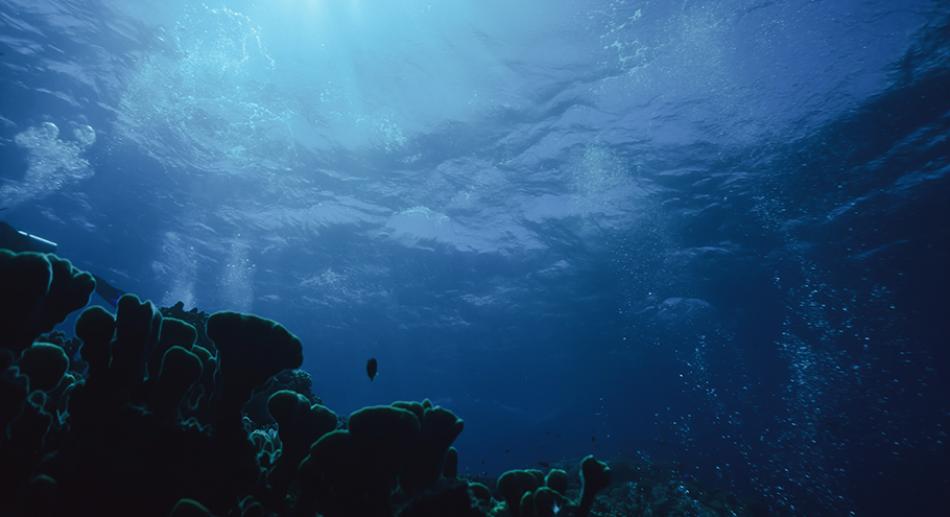
Rare but nevertheless precious for marine life. The study of chemical elements known as “trace elements" provides a rich knowledge of how the oceans work. On board the Marion Dufresne, Hélène Planquette and her team begin sampling methodically: collecting these metals requires colossal and rigorous efforts for several months before, during and after the expedition.
By Victoria Lascaux, translated by Elena Masferrer.
Small but powerful !
In very small quantities, the chemical elements known as "tracers" are nonetheless indispensable to the functioning of the ocean or to the understanding of it: iron, but also copper, zinc, aluminium, each plays its own role... Others can be toxic for the environment, such as cadmium and mercury.
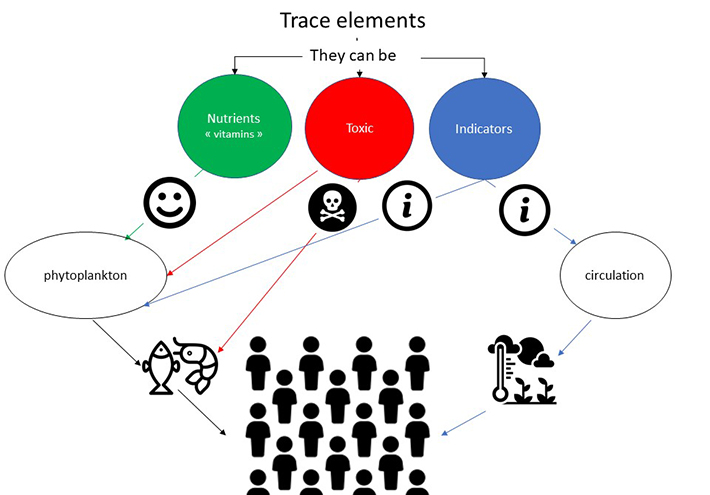
Scientists classify trace elements in three categories. There are those that are called indicators, which make it possible to reconstitute the circulation of water masses thanks to a metal from the Rare Earth Elements group: the neodymium.
There are also elements known to be rather "toxic", such as mercury. They have a bad reputation because they accumulate along the food chain - in the livers of fish caught and sold on the continent. These toxins thus return to their harmful origins, as they reach the oceans because of industrial human activity.
The third category includes trace nutrients known as "vitamins"; that is, those that are directly essential for the development of phytoplankton. In order for these surface algae to grow, they rely on photosynthesis, a process that requires a lot of iron - just like our red blood cells, iron in plants helps transport oxygen.
On board, Hélène Planquette and her team are focusing particularly on the trace elements “vitamins", in order to determine naturally fertilised areas such as those around the Crozet or Kerguelen islands. The aim is to determine if they release a lot of iron and other "vitamins", and then to observe how these elements spread. To take the samples, several months of preparation have been necessary.
Stopping the contamination
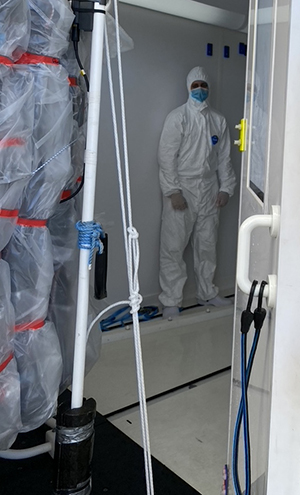
The tools used on board have been meticulously washed before departure and highly protected from any contamination. The samples must not be contaminated by the iron on the deck of the boat, for example. During one year, 5,000 bottles were rinsed several times with detergent, distilled water and acid. This process is mandatory in order to guarantee the reliability of the samples.
In addition to this cleaning phase, on the research vessel, at the time of sampling and filling in the analysis bottles, each team member wears a suit and gloves, always with the aim of avoiding contamination of the particles collected.
There are two types of plastic bottles for sampling. Firstly, 12-litre bottles mounted on a rosette that will be immersed in the water column for several hours in order to sample the maximum amount of water at different depths. Once this manoeuvre is completed, each team follows a precise protocol to recover a small amount of water from these bottles, in order to analyse them afterwards.
To extract the dissolved trace metals, the seawater is filtered through a filter and each sample is collected in a much smaller bottle than the one used previously. The particles sought are then collected on the surface of the filter and the rest is drained into the bottle. This handling is done in a laboratory called a "clean room", i.e. on the Marion Dufresne a container totally protected from outside intrusion. The last step to protect these particles during shipment is to freeze them and lock them in several boxes. Stored on the research vessel, these samples will then be able to fill the cold rooms of the laboratories ashore, and occupy many teams for many hours and months for their analyses !
PORTRAIT
Nolwenn Lemaître: the marine lover who became scientist
ETH Zurich researcher.
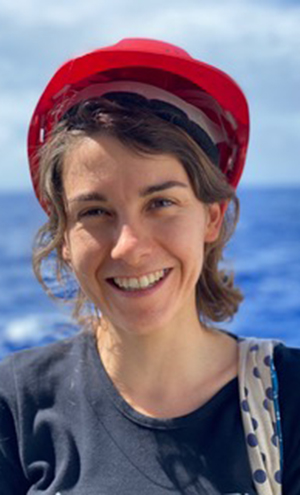
What do you like about the SWINGS expedition?
Nolwenn Lemaïtre: I grew up next to the sea. Now that I live in Switzerland, I miss it very much. On board, I know that if I feel down, all I have to do is go up to see the sea to feel better again. And then it's a chance to meet people and discover new research methods. I like to learn from others, discuss with them... I need these interactions to stay motivated and to boost my own research.
What is your role on board?
NL: I will participate in collecting particle samples. We have pumps that pass seawater through filters. These filters retain the particles, which are then analysed for different chemical elements. So my job will consist of deploying the pumps, collecting the filters, sharing them between the different researchers, and then protecting, cleaning and preparing the pumps while they are on board.
What does a typical day look like?
NL: There is not necessarily a typical day. You can arrive at the stations at any time, and then you have to be available. You may arrive at 3 PM and work until 3 AM, or you may have a day with more normal hours. It all depends on what time you arrive at the station.
What is your scientific background?
NL: At high school, I was in a sport studies section with a speciality in sailing. Then I did a degree in chemistry without really knowing why. Then I met Catherine Jeandel, who is now the co-chief scientits of SWINGS. It was her who introduced me to marine chemistry. Later, I did my doctorate between Brussels and Brest, and my thesis supervisor was Hélène Planquette, who is the other chief-scientist of SWINGS! As a result, I'm going to sea with my two scientific "mums"! At the moment, I'm doing a postdoctorate in Zürich on metals isotopes such as zinc, nickel or copper to understand their biogeochemical cycles.
What do you do to escape on board?
NL: I like to spend time with the other crew members. Otherwise, I can stay in my room, watch a film on my computer, write e-mails to my friends or read.
What books have you brought with you?
NL: I took Tara Tari, from Capucine Crochet, the story of a young woman who crosses the ocean in a boat. I took Catherine Certitude, by Modiano and Sempé. And The Little Prince, which is my favourite book.
CRUISE DIARY
13 January in the morning: Departure
After a PCR/COVID test for the whole crew, it is not without emotion that the scientists set sail, with a small last-minute gift as a bonus:
"We were lucky enough to be accompanied by the dolphins, we couldn't have dreamt of a better start".
With no time to lose, the team now concentrates on the test station, where they deploy their three types of instruments: the standard rosette, the clean rosette and the in-situ pumps.
A rosette still packed with the plastic protective films. Testing the displacement of the rosette. © Laurent Godard.
A test station, is used to test everything: the equipment intended for immersion in water, but also the fluidity of manoeuvres, the organisation of research teams and the handling in the labs.
"During these first two days, it's all about testing all sorts of things, and testing themselves...and at the beginning it's a bit laborious! »
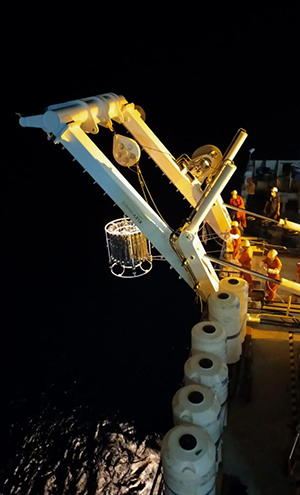
On board, night does not necessarily means to sleep, which is the case when the rosette is launched. It is a difficult and complex manoeuvre, thus scientists must be wide awake.
24 hours later: re-motivate the teams !
Between the satisfactions during a successful deployment and the disappointments in the middle of the night when a sensor stops working, the first days are exhausting. Nothing better to re-boost the teams than a good breakfast, quickly eaten !
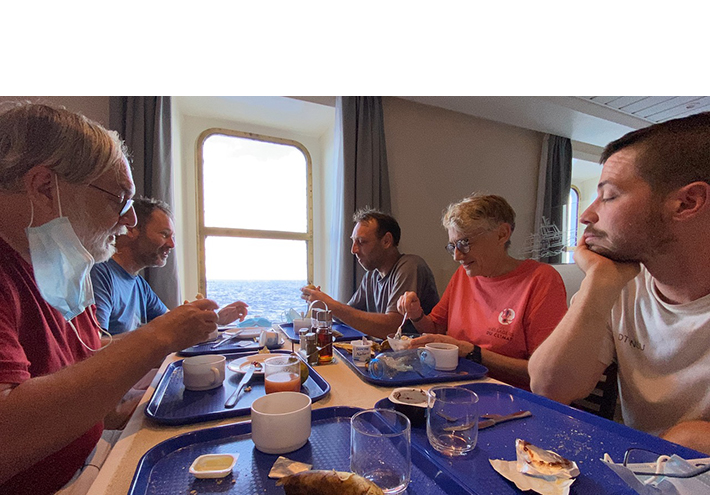
These shared moments are not without fun. The apprentices on board, curious to learn and understand everything, ask hundreds of questions.
The errors are also there:
"Tell me, why did you install the air filters to filter the water?”
There was no shortage of laughs, especially during a pump priming sequence which unfortunately did not succeed despite the efforts of all team members.
15 January 10:30 AM - End of the test period
These first few days have been intense, the sleepless nights followed one another and there are a lot of things to readjust but... we are, the scientists have worked hard and the mission has only just begun.
"The test station is finished, the weather has been good, and we are very tired. The sleepless nights followed one another and there are a lot of things to readjust but... we are full of optimism because we have the solutions!”
To be continued...
To learn more, follow the cruise diary : https://swings.geotraces.org

